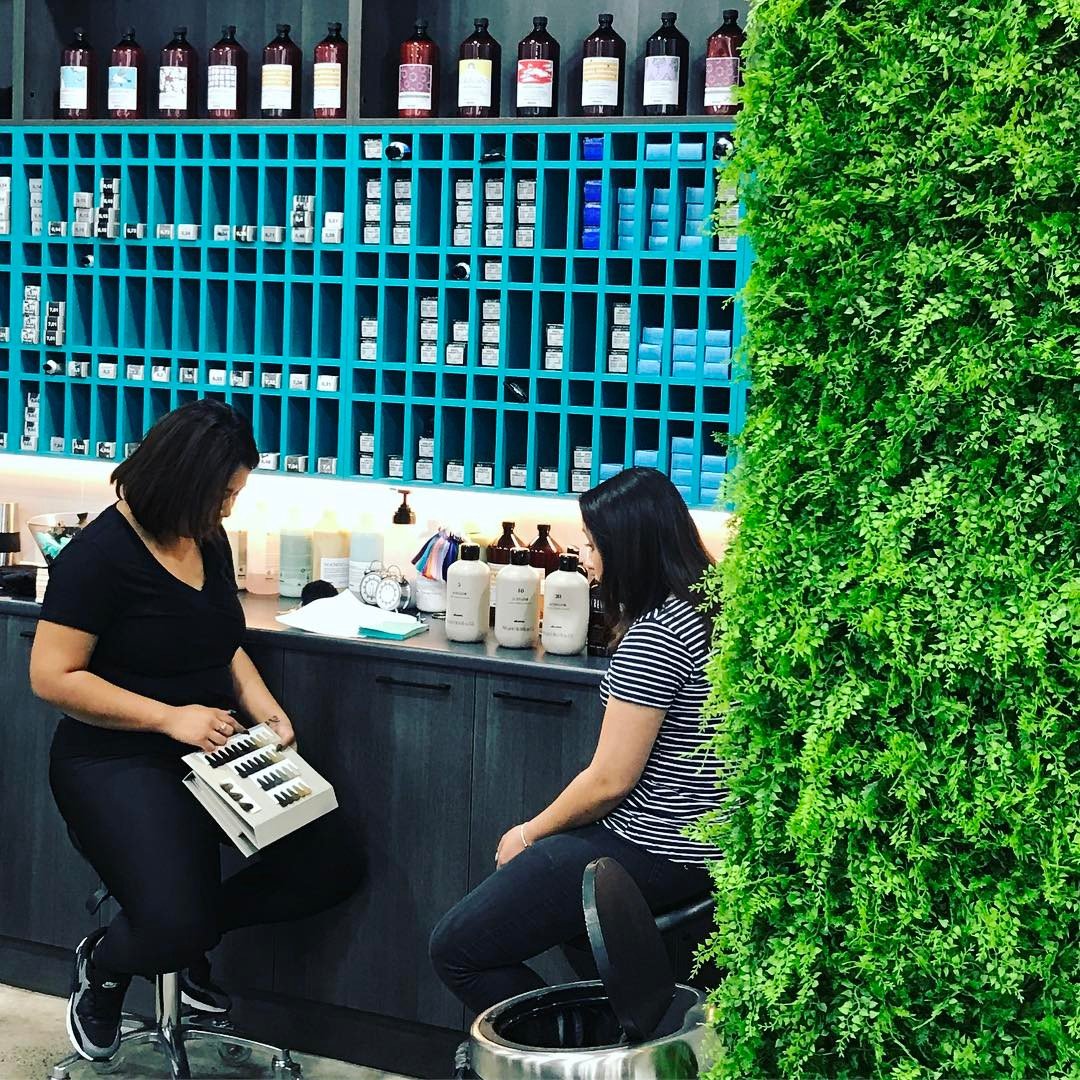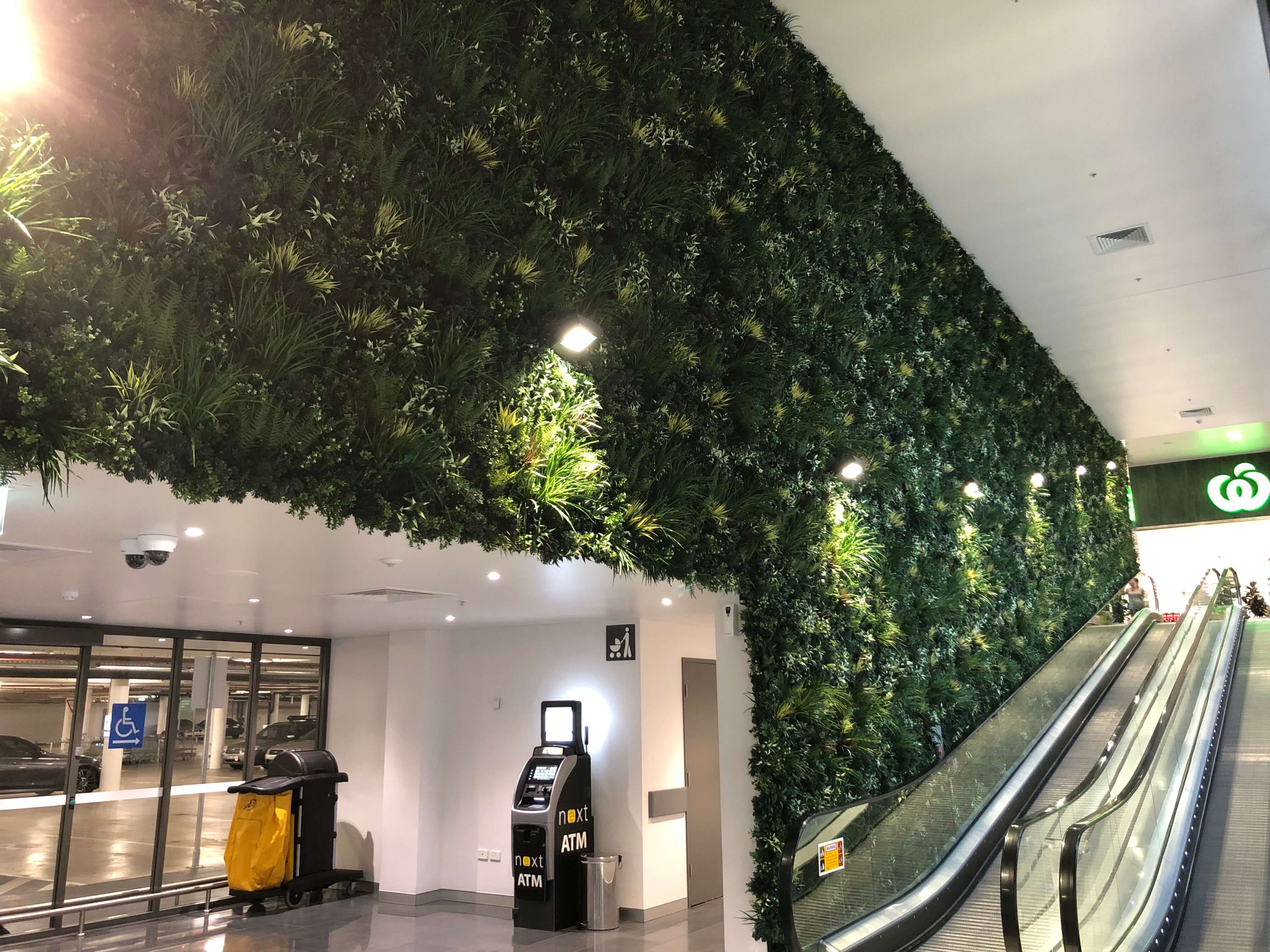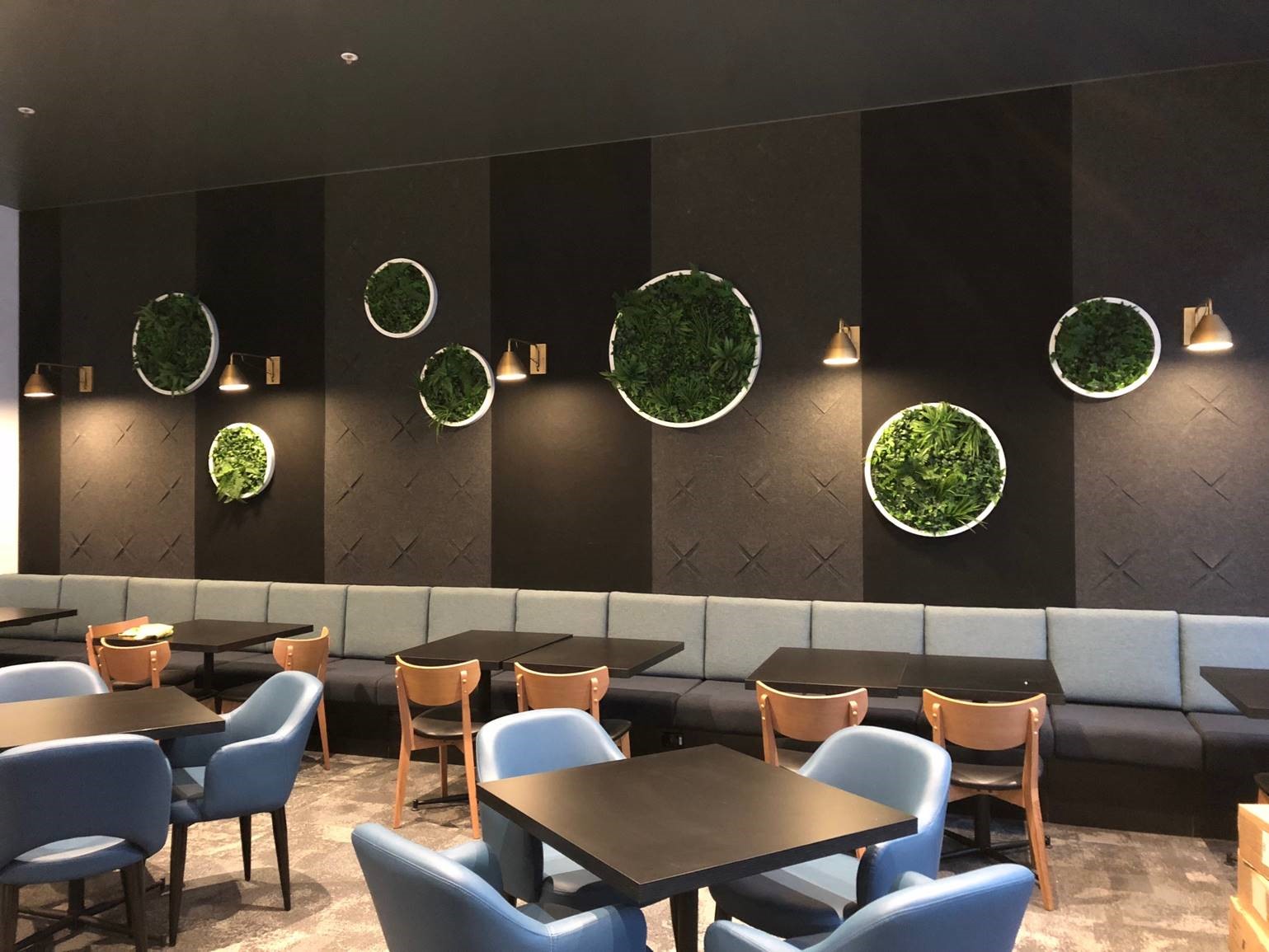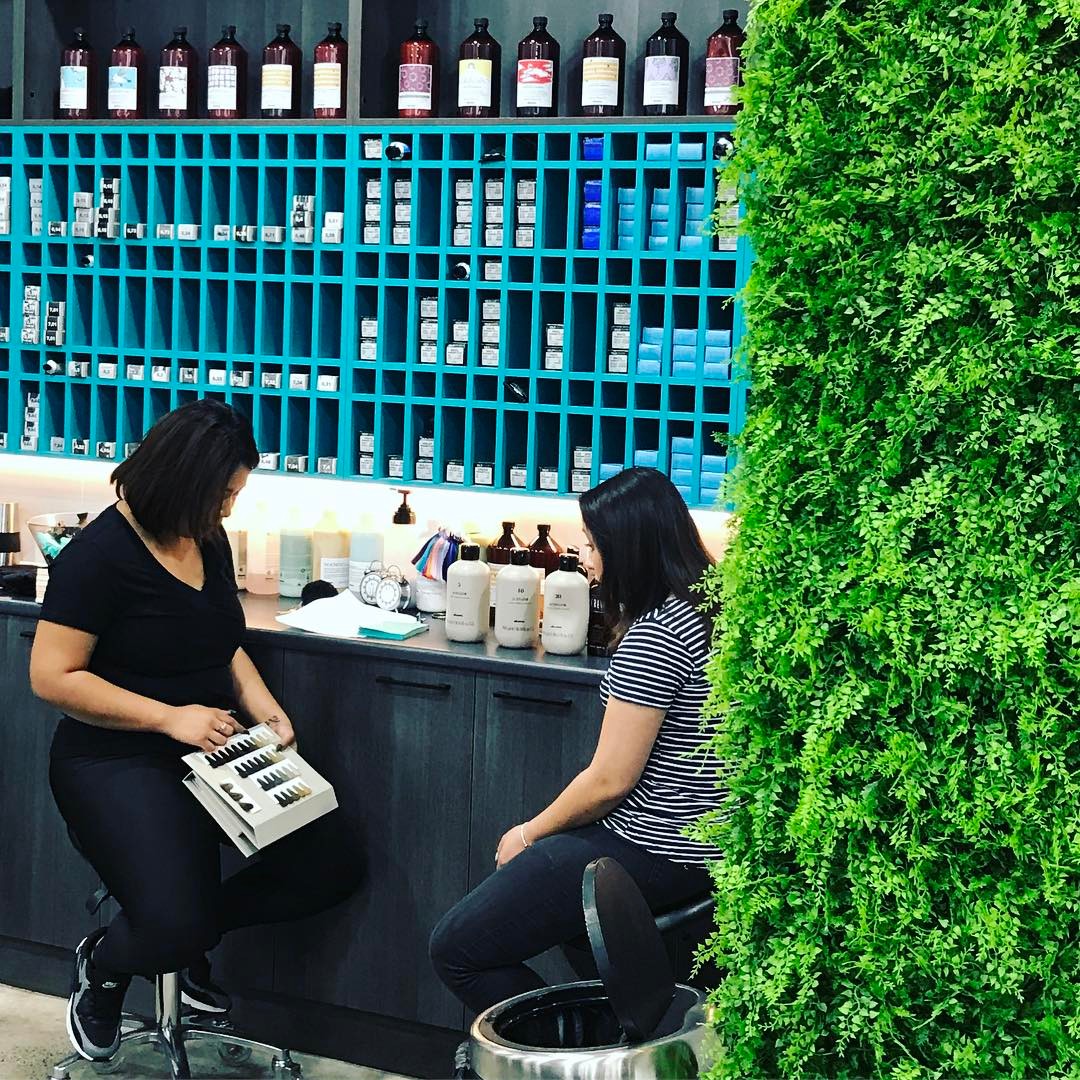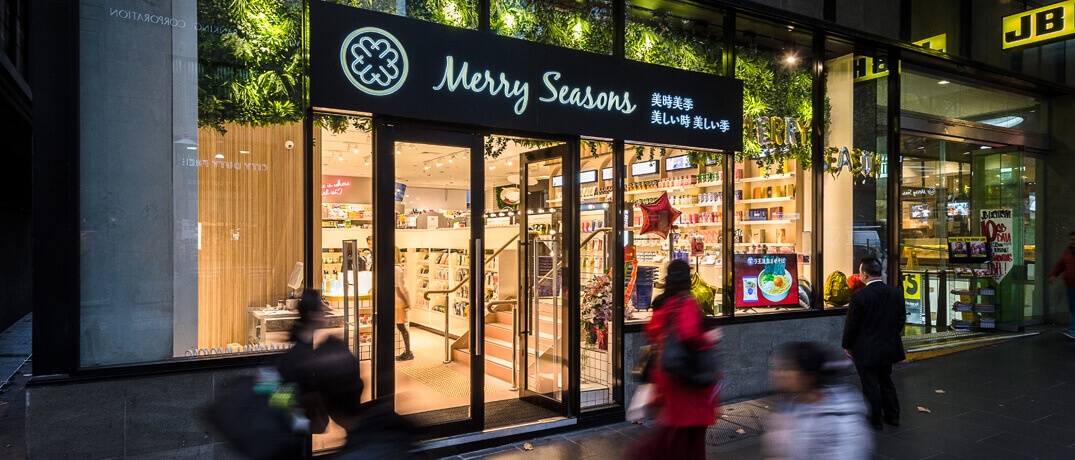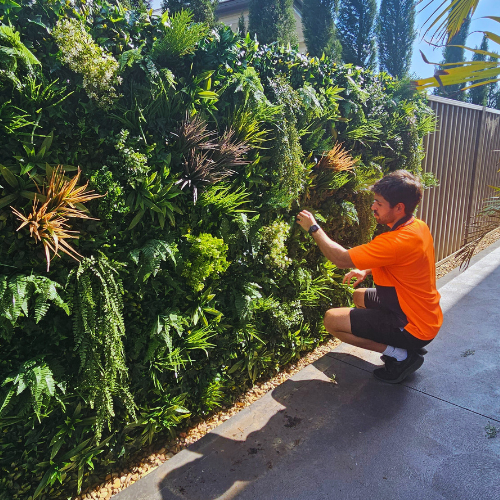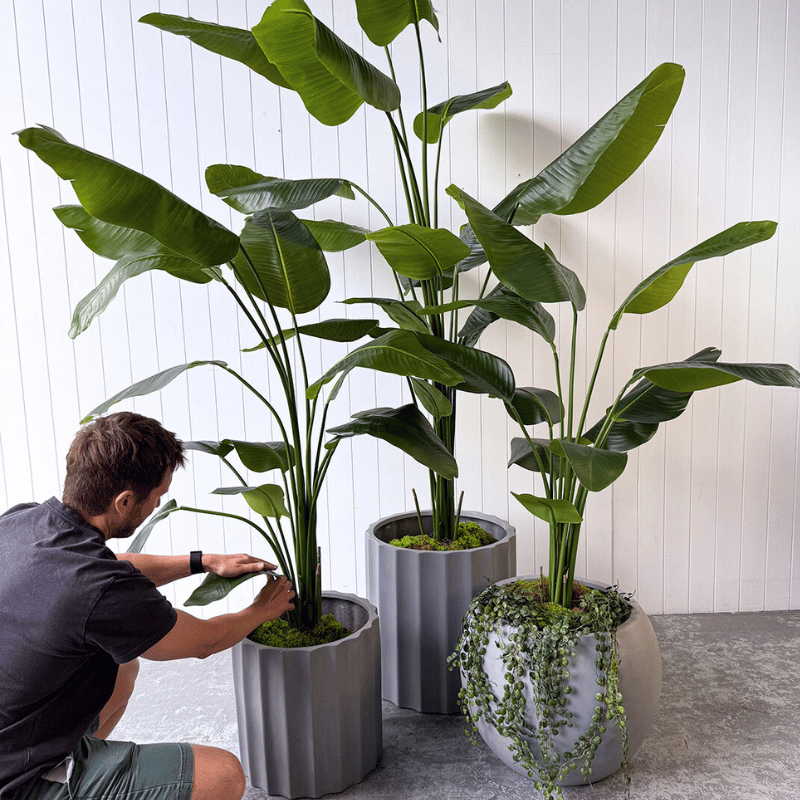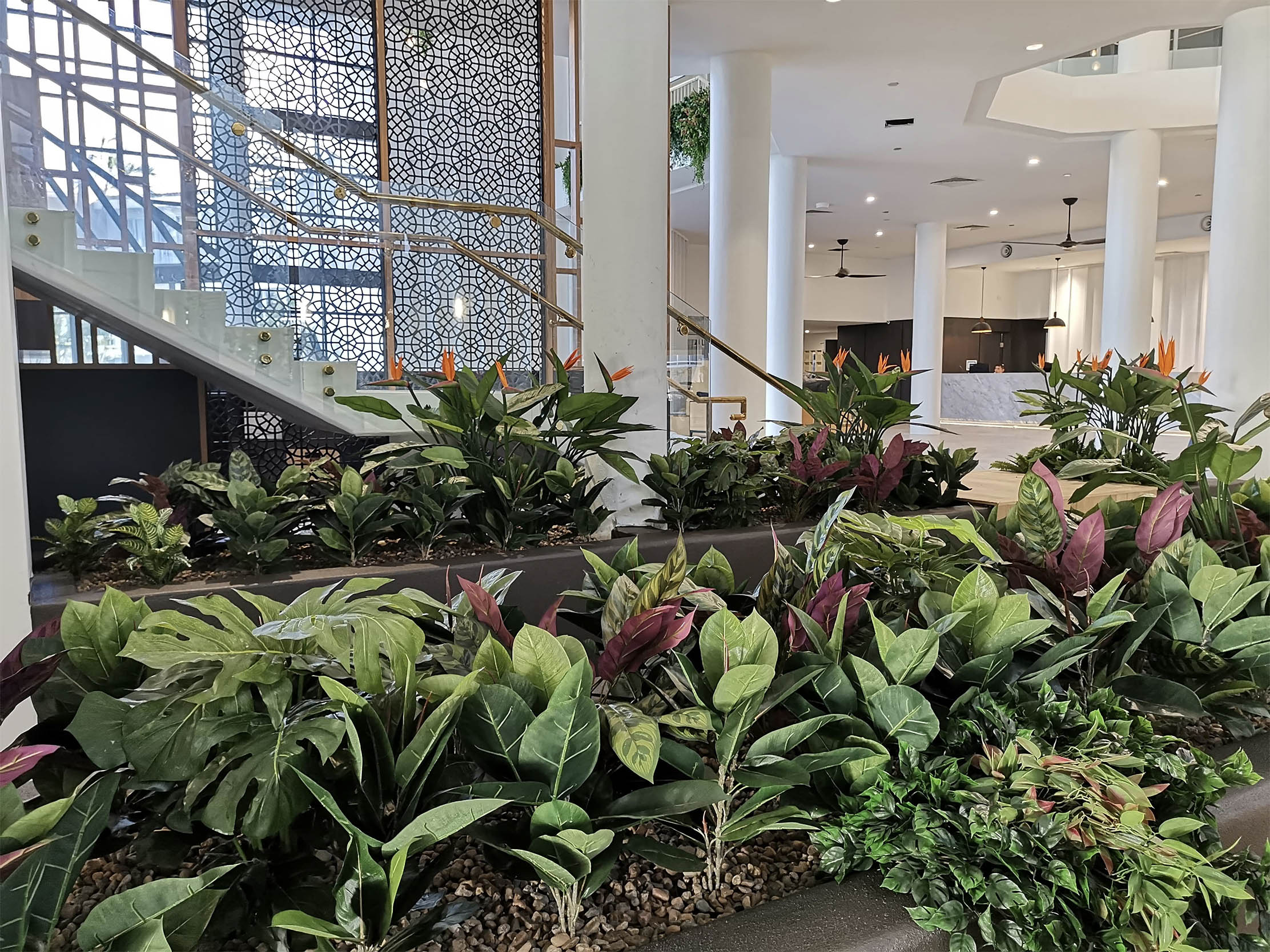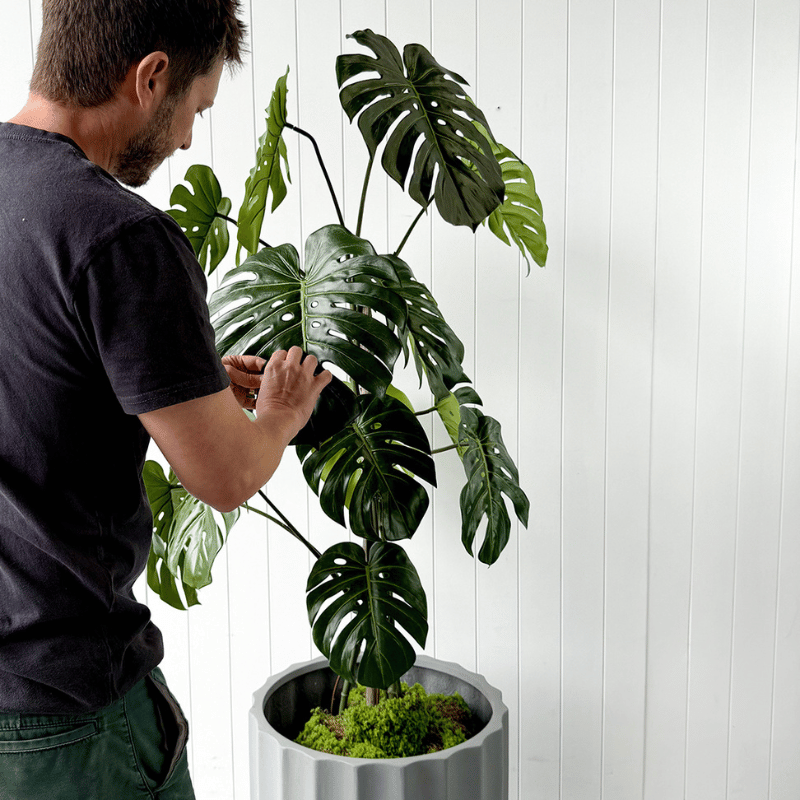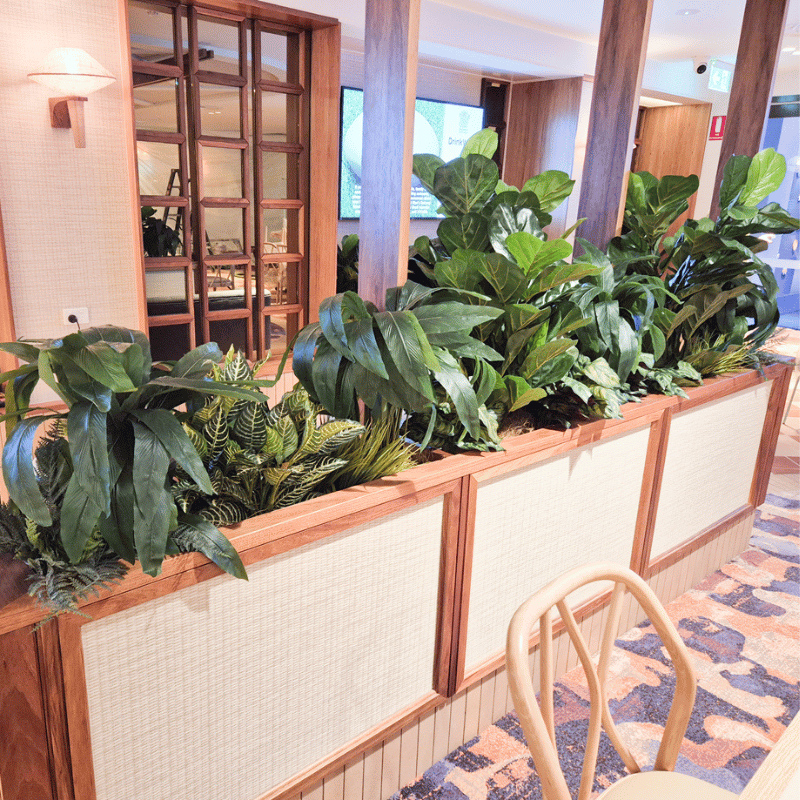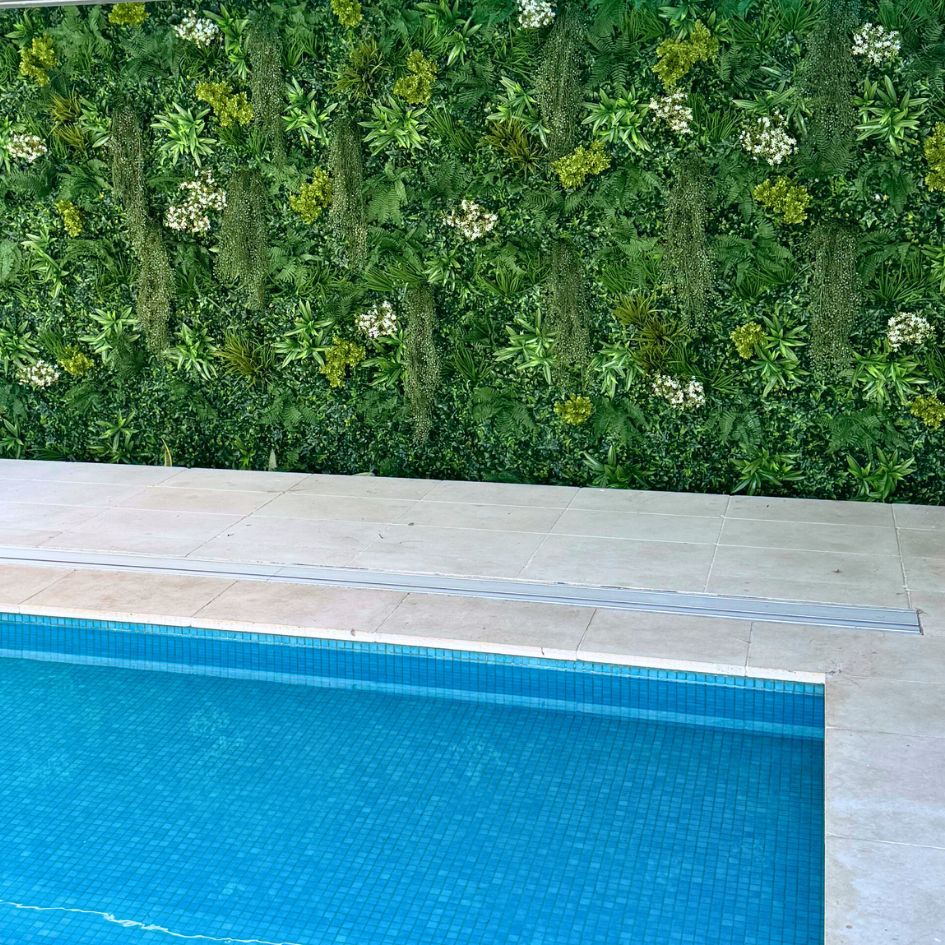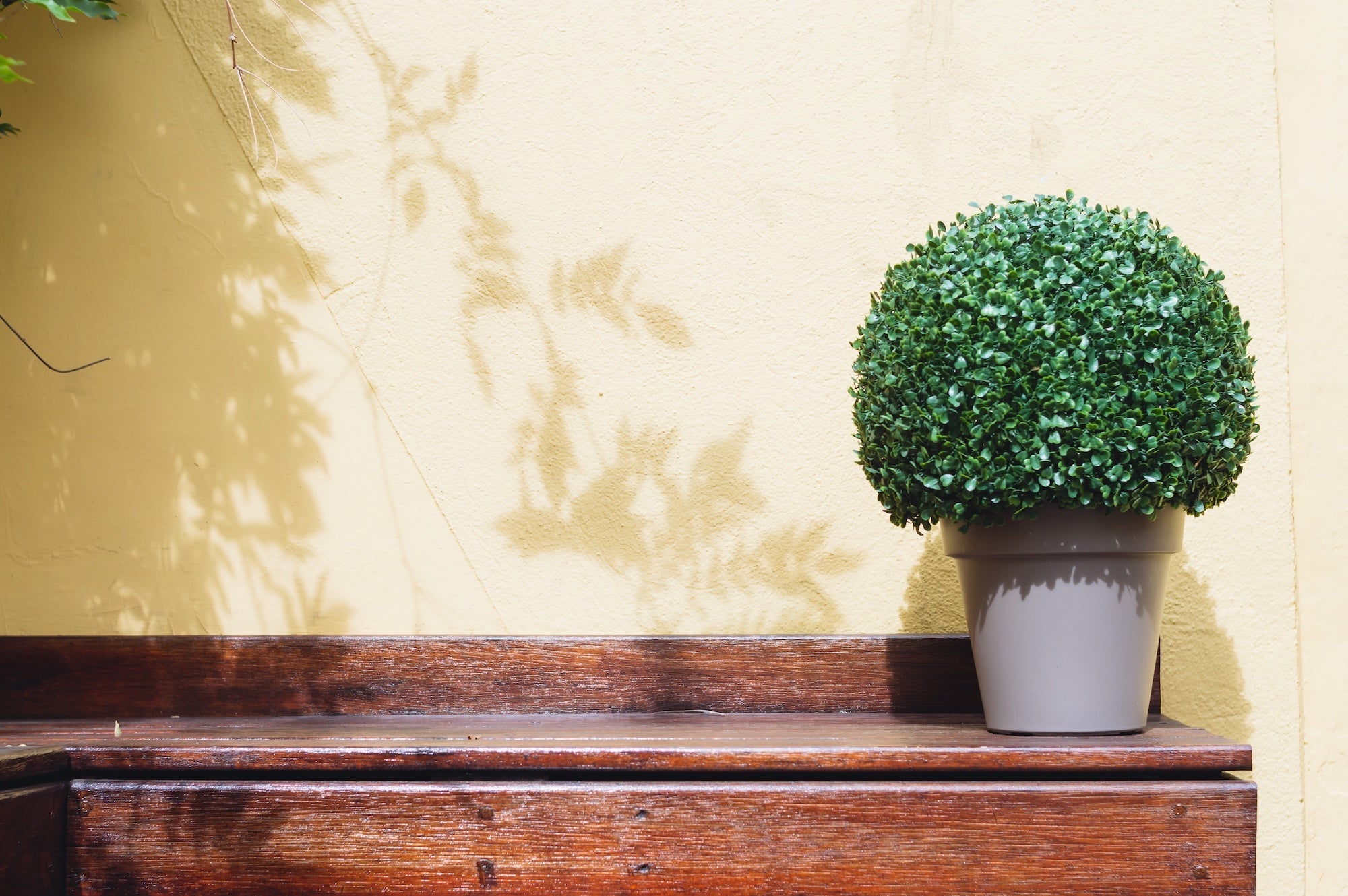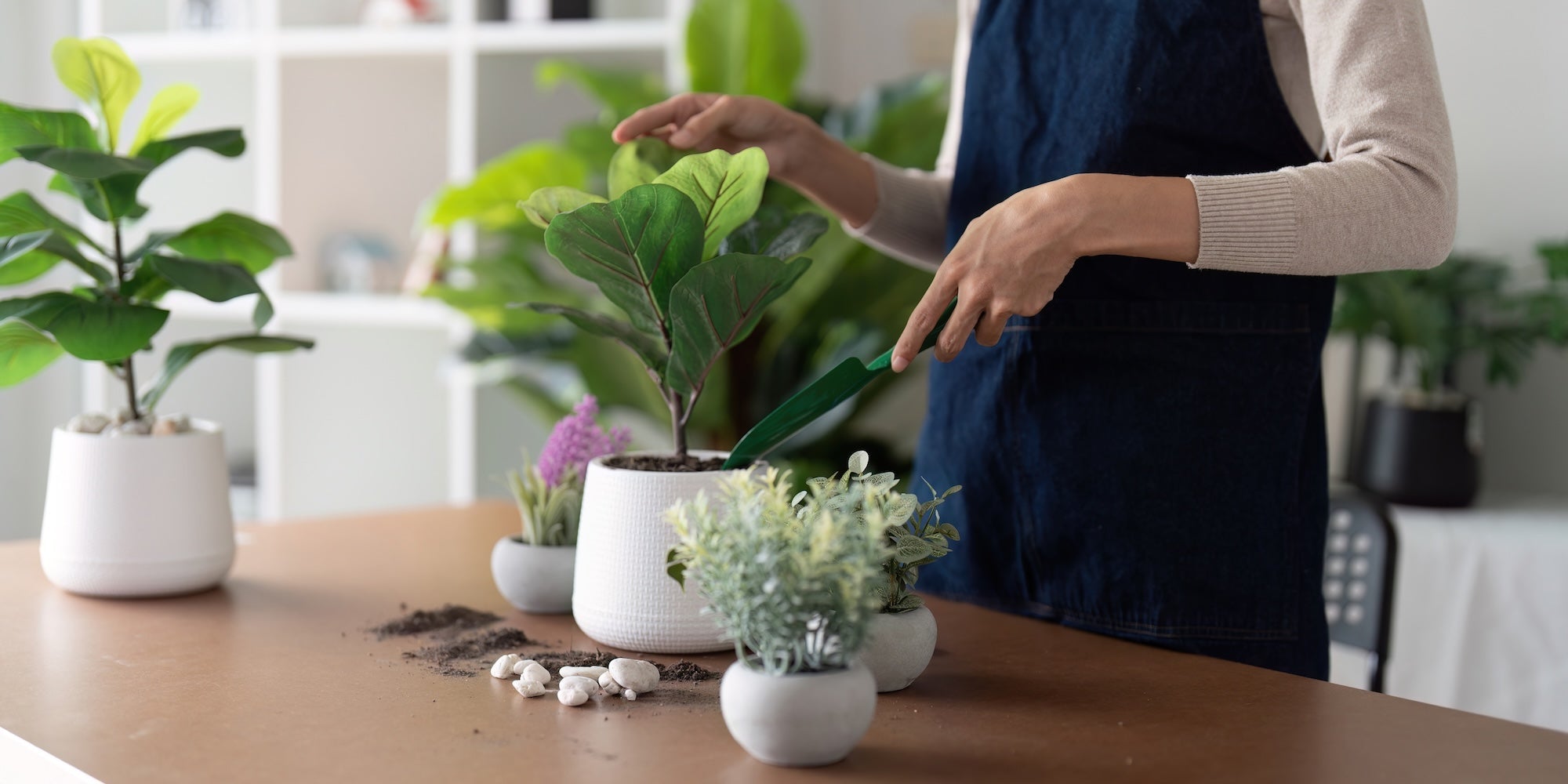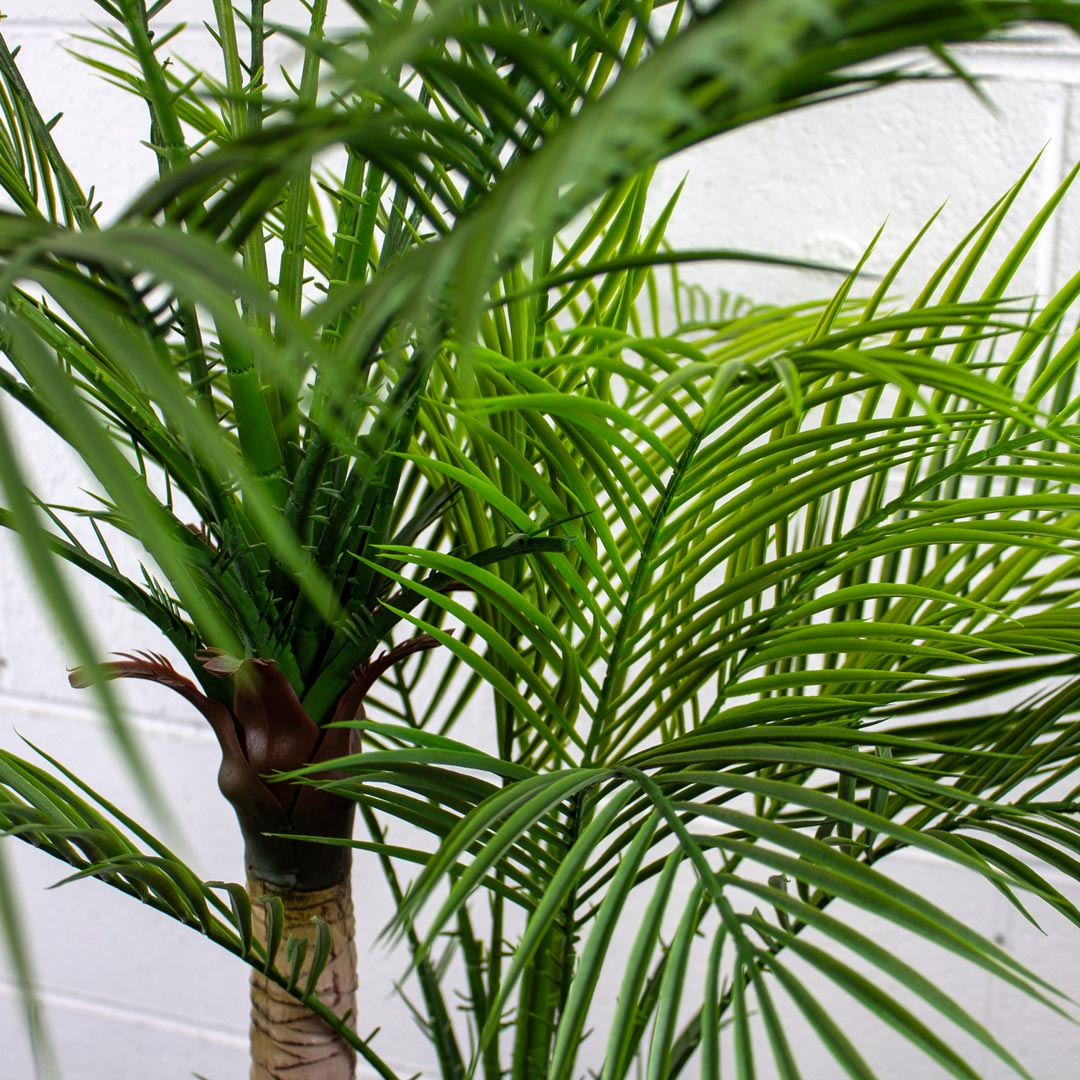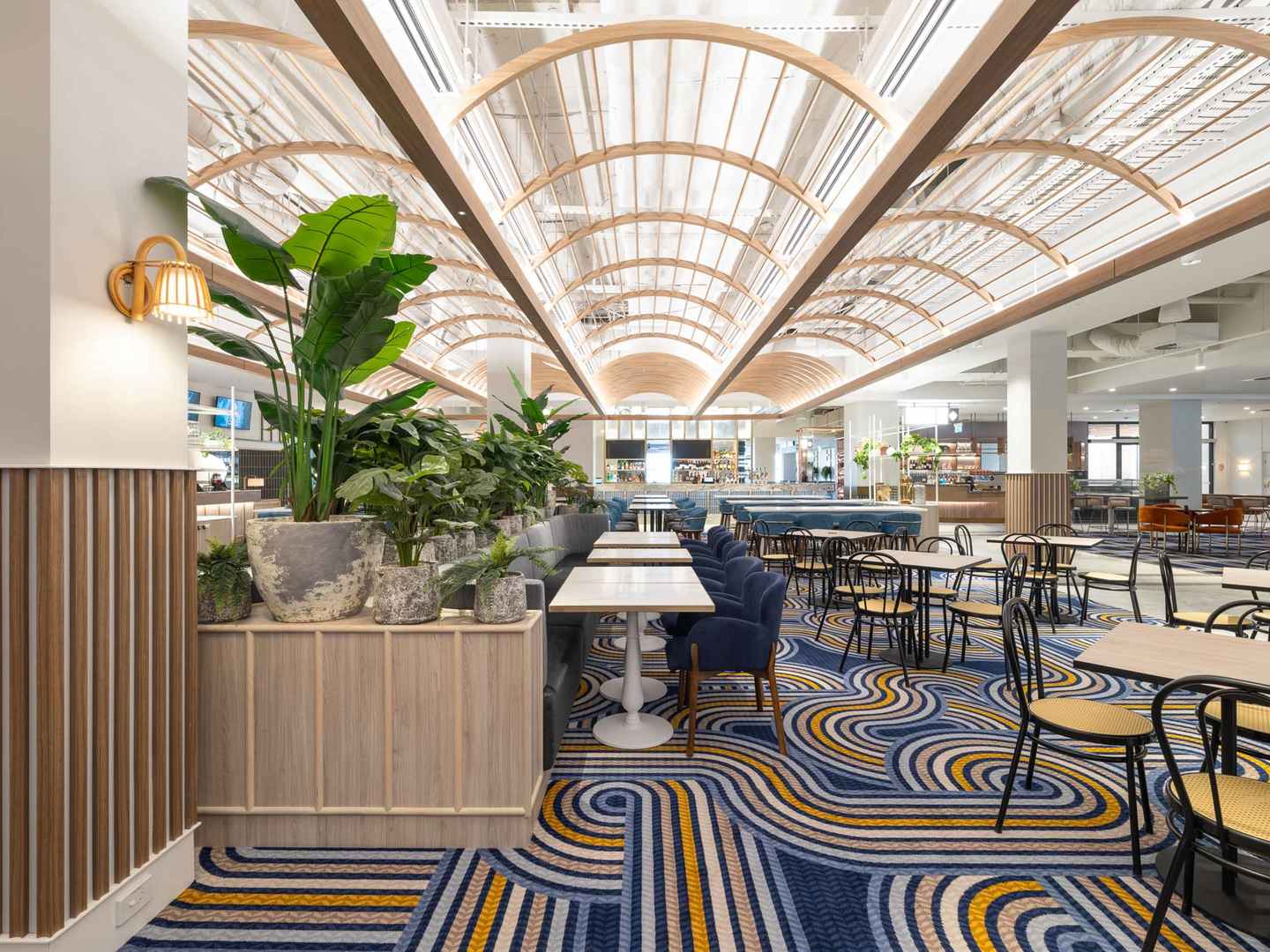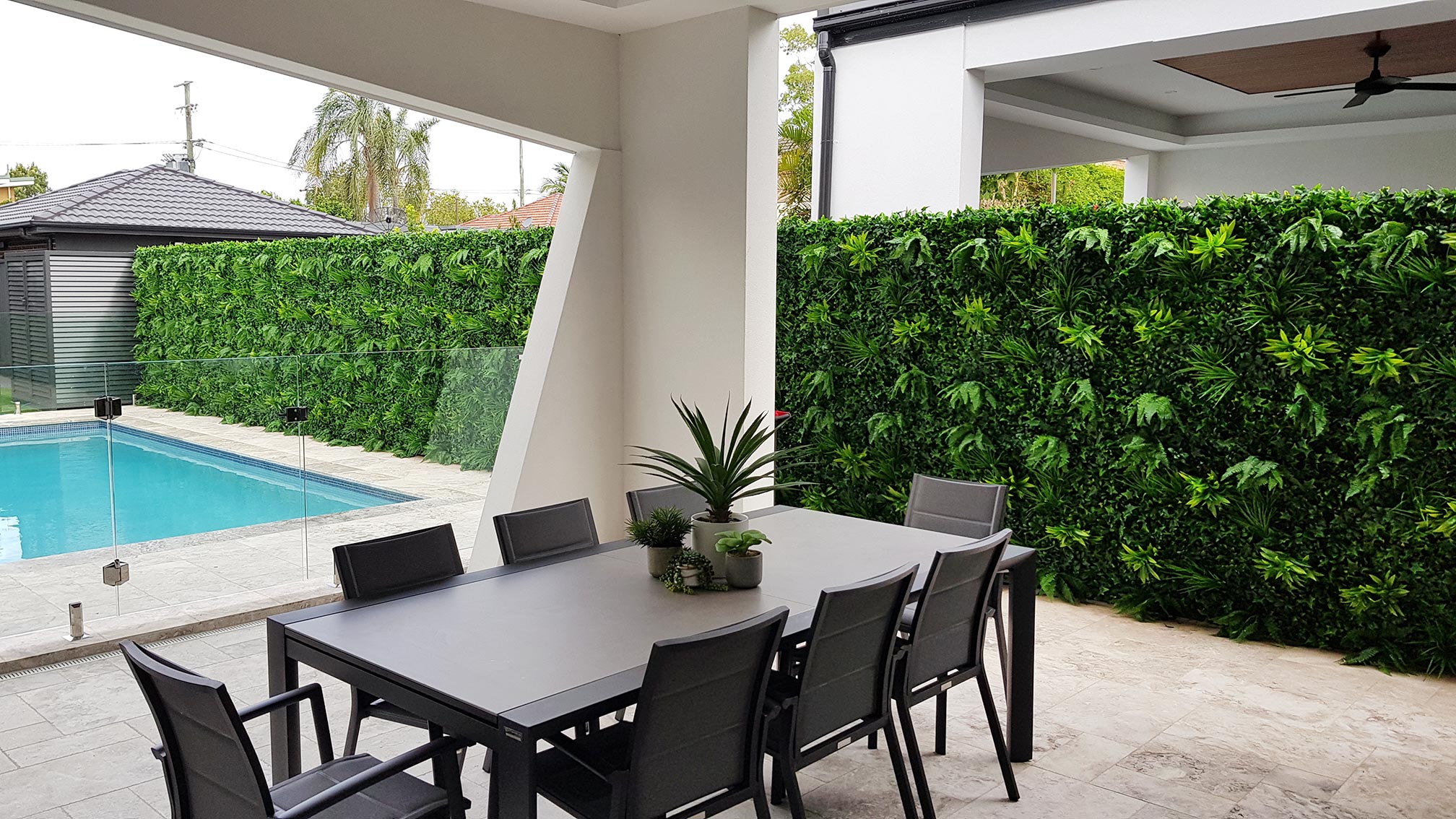These days, building owners and tenants are looking for the next big thing: a pop of color, a design feature that draws the eye, something that brings a unique flair to a building’s interior. Some options, like original art, can be very expensive, and others, like a water feature, are difficult to install and costly to maintain.
One increasingly popular option is living walls made from fresh plants, vines and flowers. With a growing focus on tenant health and wellness, design features like living walls and lots of natural lighting—which often go hand in hand—are more and more common. But a living wall is exactly that: a living thing. Plants have to be taken care of, watered, trimmed back, monitored for pests and replaced if they die.
Artificial greenery in commercial buildings offers the visual benefits of a living wall while being more affordable to install and much easier to maintain. And with a variety of artificial plant options and nearly endless configurations, designing an artificial living wall is an opportunity to add a truly creative feature in any commercial or residential building.
Artificial greenery design, like any architectural focus piece, has many elements to evaluate. When you’re designing your artificial green wall, you need to take into consideration both what the ultimate vision of the project is, as well as limitations of the space.
Choosing a Location
The most obvious question to ask is what is the size of the space you’ll be working in. Do you want to cover a whole wall from floor to ceiling? Artificial living walls look great covering a large wall that runs the entire width of a building or on a single narrow dividing wall between rooms. Or if you don’t want to cover the whole wall, you can also use customized shelves and racks to create unique shapes.
Next, take a look at what other features are close by. Some of them will compliment your artificial green wall, while others can complicate installation. Big windows or a water feature will extend the illusion of bringing the outdoors in, while functional and accessibility elements like staircases and escalators will change the visible angles of the finished product.
And speaking of staircases and escalators, how close will people get to your artificial living wall? While artificial plants offer a more durable solution than living ones, if your artificial green wall is in a high traffic area, make sure to put measures in place either to protect your plants or to do regular maintenance to keep your wall looking great.
Choosing Plant Varieties
The good news is, artificial living walls are virtually maintenance free. No watering, no pruning, and you never have to worry about allergies getting in the way of a tenant’s ability to enjoy your newly designed wall. And purchasing high-quality artificial plants means you won’t have to worry about them fading in natural light, so you can place your wall wherever looks best.
So which plants do you choose? Artificial greenery design offers a lot of flexibility. Plants are mounted on individual panels which are attached to the wall, so you can choose the same plant from one end of the wall to the other, or mix it up to create more visual interest. Choose from classic ferns or mint for a fairly uniform appearance, or a tropical mix to add splashes of color.
There are a number of artificial plant suppliers out there. Make sure you understand what’s on offer when you shop around. Most sell on a unit price per panel. How big is their standard panel? What are their plants made of? Affordable artificial green walls can be made from plastic, silk or paper. Higher quality panels can offer added benefits, like being fire-rated.
Also, look to see if your supplier offers customisation. Can you add plants to the existing panels? If you want mostly green panels, but with a pop of a specific color, what are your options? A quality supplier will be able to adjust their base plant panels and make them fit your design, instead of your design having to fit their panels.
Review Installation Requirements
The last thing to consider as you’re specifying your artificial living wall is what the structural requirements for installation will be. An artificial green wall is considerably less heavy than a living green wall, since it doesn’t have to support soil and water, but make sure you know how the wall panels will be attached and what, if any, structural support will be needed.
Once you’ve answered all these questions, you’ll be most of the way to having your artificial living wall designed. Whether you’ve selected something big or small, classic or creative, you’ve chosen a beautiful, maintenance-free option that will look great for years.
If you need help designing your artificial living wall, Evergreen Walls can help. Just fill out our quick form and one of our design experts will reach out to you to set up a design consultation.
